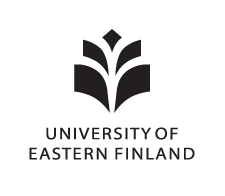Data from: Maternal effects in vulnerability to eye-parasites and correlations between behaviour and parasitism in juvenile Arctic charr
| dc.contributor.author | Kortet, Raine (University of Eastern Finland) | |
| dc.contributor.author | Lautala, Tiina (University of Helsinki) | |
| dc.contributor.author | Kekäläinen, Jukka (University of Eastern Finland) | |
| dc.contributor.author | Taskinen, Jouni (University of Jyväskylä) | |
| dc.contributor.author | Hirvonen, Heikki (University of Helsinki) | |
| dc.date.accessioned | 2020-11-19T10:48:47Z | |
| dc.date.available | 2020-11-19T10:48:47Z | |
| dc.date.issued | 2017-09-28 | |
| dc.identifier.uri | https://erepo.uef.fi/handle/123456789/23766 | |
| dc.description.abstract | Hatchery-reared fish show high mortalities after release to the wild environment. Explanations for this include potentially predetermined genetics, behavioural and physiological acclimation to fish farm environments, and increased vulnerability to predation and parasitism in the wild. We studied vulnerability to Diplostomum spp. parasites (load of eye-flukes in the lenses), immune defence (relative spleen size) and anti-predator behaviours (approaches toward predator odour, freezing, and swimming activity) in hatchery-reared juvenile Arctic charr (Salvelinus alpinus) using a nested mating design. Fish were exposed to eye-fluke larvae via the incoming water at the hatchery. Fish size was positively associated with parasite load, but we did not find any relationship between relative spleen size and parasitism. The offspring of different females showed significant variation in their parasite load within sires, implying a dam effect in the vulnerability to parasites. However, the family background did not have any effect on spleen size. In the mean sire level over dams, the fish from the bolder (actively swimming) families in the predator trials suffered higher loads of eye-flukes than those from more cautiously behaving families. Thus, the results indicate potentially maternally inherited differences in vulnerability to eye-fluke parasites, and that the vulnerability to parasites and behavioural activity are positively associated with each other at the sire level. This could lead to artificial and unintentional selection for increased vulnerability to both parasitism and predation if these traits are favoured in fish farm environments. | |
| dc.relation.uri | https://datadryad.org/stash/share/-vXzgMS4LflVhJVcS-FCBZ-9nO9f_8NnNreCowJKTXo | |
| dc.rights | https://creativecommons.org/publicdomain/zero/1.0/ | |
| dc.title | Data from: Maternal effects in vulnerability to eye-parasites and correlations between behaviour and parasitism in juvenile Arctic charr | |
| dc.relation.doi | doi:10.5061/dryad.8c1vd | |
| dc.description.datasetversion | 1 |
Files in this item
| Files | Size | Format | View |
|---|---|---|---|
|
There are no files associated with this item. |
|||
This item appears in the following Collection(s)
-
Avoimet tutkimusaineistot [568]
Open research data

